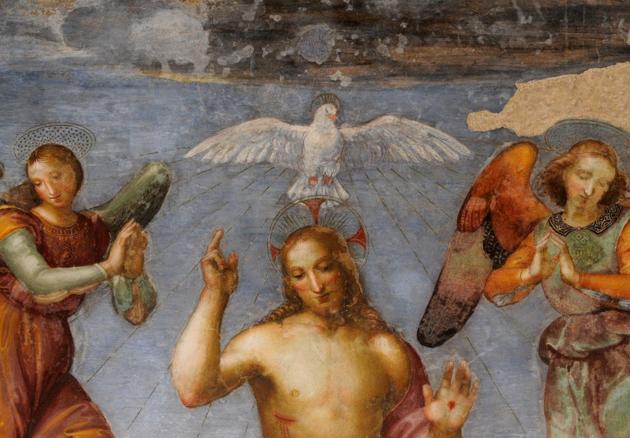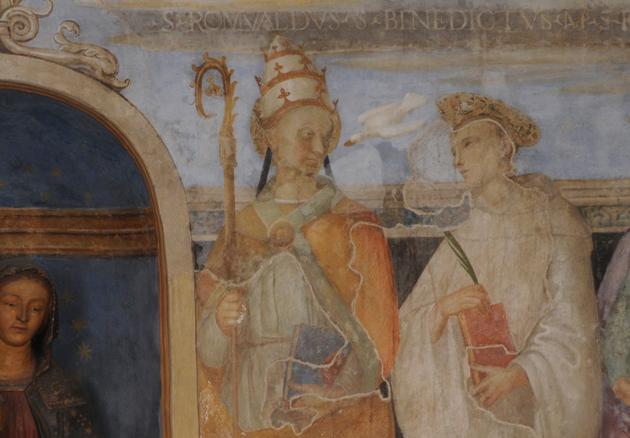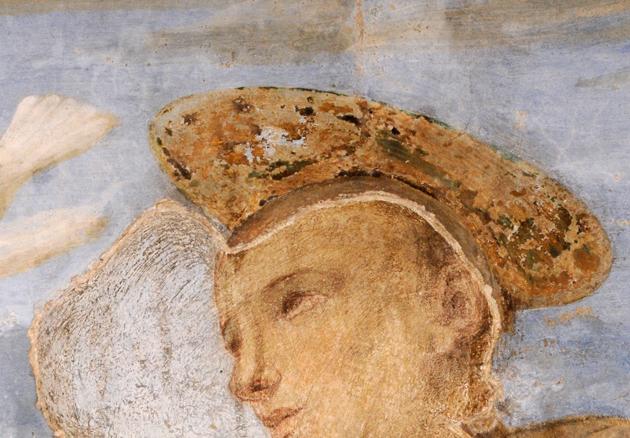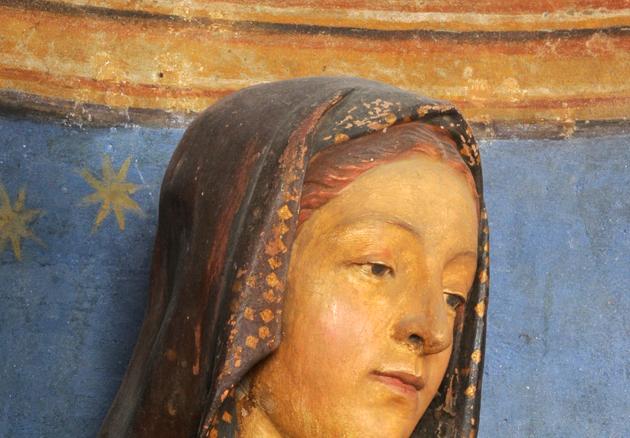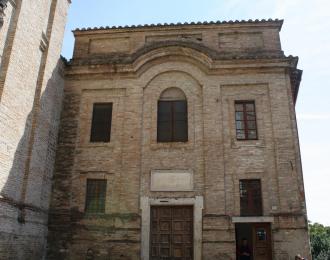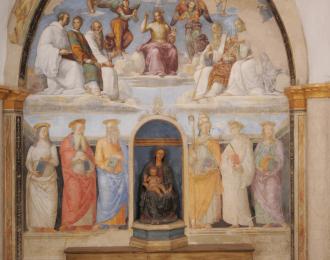San Severo chapel
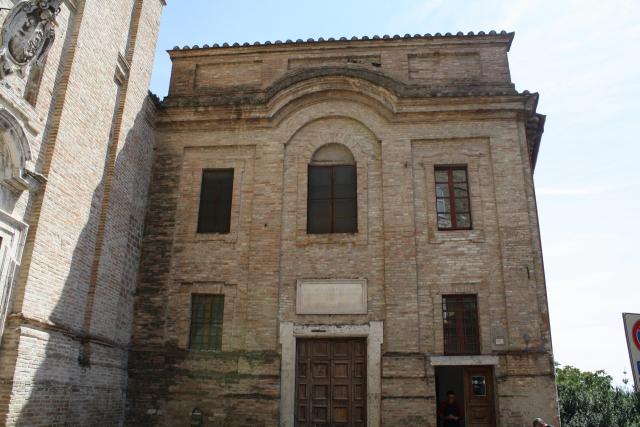
At the city’s summit, Piazza Raffaello crowns the Porta Sole quarter of Perugia. On the piazza stand the 18th century Chiesa di San Severo and the Camaldolese monastery which harbour the Trinità e Santi fresco, the only one of Raphael’s works to remain in the city today.
The painter from Urbino arrived in Perugia as a young man to join the atelier of Pietro Vannucci, known as il Perugino, and the San Severo fresco is the only place where the labours of the two men, who were not only master and student but also each painters whose work has strongly influenced the history of art, can be seen directly side by side.
The fresco was completed over the course of two separate phases: Raphael began work on the upper portion in around 1505 after, as a painter in his own right, he had already left Perugia and elected to reside in chiefly in Florence. However, on being called away to decorate the papal apartments in Rome, he failed to complete the fresco. The section signed by Raphael shows how the former student had surpassed his own master’s style by integrating ideas inspired by the paintings and sculpture of Leonardo da Vinci and Michelangelo. Following his premature death at the peak of his fame in 1520, the monastic community called on Perugino, who was already an old man, to complete the lower portion of the fresco which he finished in 1521 and which was to be his final work in the city.
Perugino kept on working right up to the final days of his life: in 1523 he died while he was painting the church in Fontignano, also his final resting place, near Lago Trasimeno the background protagonist of so many of his paintings.
The Camaldolese monastery and Chiesa di San Severo have undergone many modifications over time not the least of which occurred in the 17th century when the monks decided to demolish the 15th century church housing the fresco and use the materials to build a bigger monastery and also the present-day church which is considerably smaller than its predecessor. The only part of the original church to survive was the wall holding the Trinità e Santi fresco which was incorporated into a purpose-built space, the Cappella di San Severo (San Severo chapel), furnished with a separate entrance from the monastery sp as to provide access not only for devotional purposes but also for public enjoyment of the artwork.
Contacts:
Address: Piazza Raffaello - 06122 Perugia PG
Phone: +39 91116152 - 075 3745273
Email: infoperugia@lemacchinecelibi.coop
Website: http://turismo.comune.perugia.it/poi/cappella-san-severo
